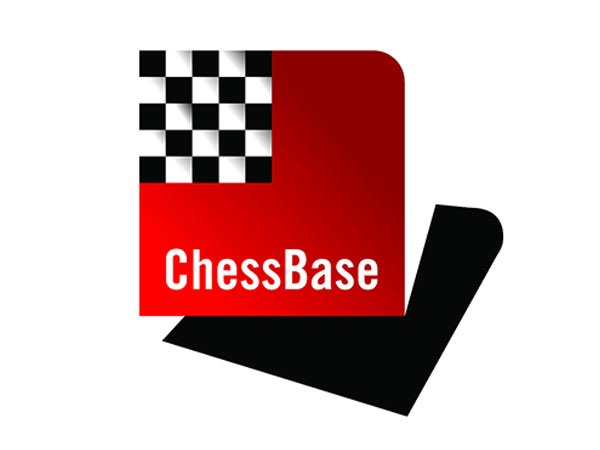
Women’s World Chess Championship Match 2013 between the current World
Champion Anna Ushenina of Ukraine and her challenger, Hou Yifan of China
(former World Champion 2010-2012), is being played from September 11th to
27 in the Taizhou Hotel (Taizhou, China). The time control is 90 minutes
for the first 40 moves, followed by 30 minutes for the rest of the game,
with an increment of 30 seconds per move starting from move one. The games
start at 3 p.m. local time. That translates to 09:00 a.m. CEST, 03:00 a.m.
New York, 10:00 a.m. Kiev. You can find your local time here.
Round seven report
Anna Ushenina employed a bizarre variation of the Najdorf, in hopes of
taking Hou Yifan out of her preparation. Despite the early games giving
the Ukrainian player everything she wanted from the opening, it became clear
game by game that these opening advantages did not exist anymore and Ushenina
started suffering in the Keres Attack of the Sicilian. Trying to avoid that
she played 6...Nbd7. Yifan followed the game Ponomariov-Topalov, Thessaloniki
2013 and obtained a pleasant edge. Black's crippled pawns were simply not
compensated. With precise play the Challenger was able to wrap up the game
and the championship in forty moves.

Exuding confidence: the challenger: 19-year-old
Hou Yifan

The reigning Champion Anna Ushenina from Ukraine

Chief arbiter Panagiotis Nikolopoulos at the
start of game seven

Press and photographers have five minutes at
the start of the game

No public for this final game, just arbiters,
family, official photographers and TV

Ushenina plays a bizarre variation of the Najdorf
with 6...Nbd7 ...

... and soon finds herself in an unpleasant
position

The challenger takes advantage of Black's crippled
pawns and wins the game in 40 moves
Game seven analysis by IM Elisabeth Pähtz

[Event "WCh Women 2013"] [Site "Taizhou CHN"] [Date "2013.09.20"] [Round
"7"] [White "Hou Yifan"] [Black "Ushenina, A."] [Result "1-0"] [ECO "B90"]
[WhiteElo "2609"] [BlackElo "2500"] [Annotator "Paehtz,Elisabeth"] [PlyCount
"79"] [EventDate "2013.09.11"] {When comparing the latest World Cup in
Tromso where White scored the usual statistic- This match went from the
very beginning for black dominance. The seventh game of the championship
was not only the last and deceisive one, but also the very first White
victory.} 1. e4 c5 2. Nf3 d6 3. d4 cxd4 4. Nxd4 Nf6 5. Nc3 a6 6. Be3 Nbd7
{After two succesfull Naidorfs with 6...e6, Anna tried the rather uncommon
knight move 6...Nbd7. From the psychological point of view, however, I
think it was her only chance, as repeating the old games would have probably
resulted in an encounter with Chinese preparation and add even more confidence
to her superiour opponent.} (6... e6) (6... e5) ({or} 6... Ng4 {are the
usual responses.}) 7. Be2 e6 8. g4 {A very interesting choice if we skip
her obvious g4 preferences in the previous games. The position will remind
a lot of players of the popular Scheveningen System, however with the
difference that the knight is placed on d7 instead of c6. The idea behind
her move is that if White plays carelessly with} (8. O-O $6 {then Black
would achieve an excellent position after} b5 9. a3 {and} Bb7 {- a dream
set up for any Sicilian player!}) (8. f4 $5 {would have been choosen by
experienced Scheveningen players, because now after} b5 9. Bf3 {White
would try to take advantage of the open diagonal. I bet this was what
the Ukrainian Team had prepared, a complicated tactical position where
Hou could easily go astray.} { For example} Bb7 (9... b4 $6 10. Nc6 Qc7
11. Nxb4 Rb8 12. Nd3 Rxb2 13. Qd2 $14) 10. e5 (10. a3 $5 {This game, by
the way, reveals which of her two coaches was responsible for this line.}
Qc7 (10... Rc8 11. O-O Rxc3 12. bxc3 Nxe4 {Again a typical Sicilian motive;
however here I prefer White, as the pawn structure a6-b5 will become a
problem for Black sooner or later.}) 11. Qe2 e5 12. Nf5 g6 13. fxe5 dxe5
14. Nh6 Bc5 15. g4 Bxe3 16. Qxe3 Nb6 17. Be2 Nfd7 18. Rf1 Rf8 19. g5 Qc5
20. Qxc5 Nxc5 21. Ng4 Nbd7 22. O-O-O O-O-O 23. b4 Nxe4 24. Nxe4 Bxe4 25.
c4 Bc6 26. Rd6 Kc7 27. c5 e4 28. Nf6 Ne5 29. Rxd8 Rxd8 30. Ng4 Nf3 31.
Bxf3 exf3 32. Ne5 Be4 33. Nxf3 Rd5 34. h4 Kc6 35. Rf2 a5 36. Ne1 Bf5 37.
Rd2 Be4 38. Nc2 Rxd2 39. Kxd2 Kd5 40. Kc3 f5 41. gxf6 Ke6 42. bxa5 Kxf6
43. Kd4 Ba8 44. Nb4 Ke6 45. Nd3 h5 46. Ne5 g5 47. hxg5 h4 48. g6 Kf6 49.
c6 h3 50. c7 Bb7 51. Ng4+ Kxg6 52. Kc5 Kf5 53. Kb6 {1-0 Kononenko,D-Korobov,A/Poltava
UKR 2009}) 10... Bxf3 {and here the main line goes for} 11. Qxf3 $6 {which
looks tempting indeed, but gets White in trouble after} (11. Nxf3 dxe5
12. fxe5 Ng4 13. Bd4 Qc7 14. Qe2 Bc5 $13) 11... dxe5 12. Nc6 Qc7 13. Nxe5
{and} Rc8 $15 {where Black will be able to prove a small advantage in
the long run, due to the rather weak c-file of White.}) 8... h6 9. f4
({For some players} 9. h4 {may look more logical than the text move. However
it does not lead to much after} b5 10. Bf3 Ne5 11. g5 Nfd7 $15) 9... g5
{A move which every Najdorf player should know. The idea is very simple:
Black fights for control of the important central square e5.} (9... g6
$5) (9... b5 $6 {seems way too risky in my opinion.} 10. g5 hxg5 11. fxg5
b4 12. gxf6 bxc3 13. Nxe6 Qxf6 (13... fxe6 14. Bh5+ {with mate.}) 14.
Nc7+ Kd8 15. Nxa8 Qh4+ 16. Bf2 Qxe4 17. O-O $14) 10. f5 Ne5 11. h3 $5
{Quite a cautious choice for Yifan's style.} ({Maybe with a score of 0-0
the usually attacking Chinese girl would have gone for the more agressive}
11. fxe6 $5 fxe6 12. Nf3 Nexg4 13. Bd4 Qc7 14. h3 Ne5 15. Nxe5 dxe5 16.
Bh5+ Ke7 17. Be3 $5 $14 {?!}) 11... b5 12. a3 Qe7 13. fxe6 fxe6 14. Nf3
Nfd7 {This move has not been played before, though I think it looks quite
logical to keep the control of the square e5.} (14... Bb7 15. Nxe5 dxe5
16. Bd3 Qc7 17. h4 Bc5 18. Qe2 Bxe3 19. Qxe3 Nxg4 20. Qg3 h5 21. O-O-O
O-O-O 22. hxg5 Qg7 23. Qh4 Rdg8 24. Be2 Qxg5+ 25. Qxg5 Rxg5 26. Rh4 Nf6
27. Rf1 Rh6 28. b4 Rg2 29. Bf3 Rg3 30. a4 Bc6 31. axb5 axb5 32. Ne2 Rg5
33. Kd2 Rh7 34. Rg1 Rxg1 35. Nxg1 Kd8 36. Ke3 Be8 37. Be2 Ra7 38. Nf3
Ng4+ 39. Kd2 Ke7 40. Ne1 Nf6 41. Nd3 Kd6 42. Nc5 Ra1 43. Rh3 Rb1 44. c3
Rg1 45. Nb7+ Ke7 46. Nc5 Rg2 47. Ke1 Rg5 48. Kf2 Bc6 49. Rg3 Rxg3 50.
Kxg3 Be8 51. Kh4 Bc6 52. Bf3 Kd6 53. Kg5 Ke7 54. Kh4 Kd6 55. Kg5 Ke7 56.
Kh4 Kd6 {1/2-1/2 (56) Ponomariov,R (2742)-Topalov,V (2793) Thessaloniki
2013}) 15. Qd2 (15. Nxe5 Nxe5 16. Qd2 {would have been more precise.})
15... Nxf3+ 16. Bxf3 {Black has a better option than} Ne5 $6 (16... Bg7
$1 17. O-O-O Be5 $11) 17. Be2 Bg7 18. O-O-O Nf7 {If Black must retreat
her knight back to f7 one will easily understand that something has gone
terribly wrong. I think this is the moment where Anna lost control of
the game.} (18... Ng6 $5 {Of course psychologically it is hard to sacrefice
a pawn, but still it gives much better chances as the queens will be exchanged
and Black's king is no longer in the dilemma of where and how to castle.}
19. Qxd6 Qxd6 20. Rxd6 Be5 21. Rd2 O-O $14) 19. Bd4 Be5 20. Bxe5 dxe5
21. h4 $1 {An excellent moment to open the position.} gxh4 22. Qe1 Ra7
{This move made me smile because those of you who checked Anna's games
must have realized that this move gets special attention from her.} (22...
Bb7 $5 23. Rxh4 Rd8 24. Bd3 O-O 25. Rh5 $40) (22... O-O $5 23. Rxh4 Bb7
$14) 23. Rxh4 Rd7 24. Rh5 ({Some of you may have considered } 24. Bd3
{keeping both rooks on the board in order to concentrate White's power
on the kingside later on. It has some logic of course, but practically
speaking White was right to neglect that option as after} b4 25. axb4
Qxb4 { White faces unnecessary disturbances on the b and c-file.}) 24...
Rg8 25. Kb1 Qc5 26. Rh3 {A clever move which poses the indirect threat
of Rc3. A clever move which puts the thread of the indirect "Rc3".} Qb6
27. Qh4 ({Also interesting would have been} 27. Rxd7 $5 Bxd7 28. Rf3 Ng5
29. Rf6 $16) 27... Rxd1+ 28. Nxd1 (28. Bxd1 a5) 28... Bb7 29. Rc3 (29.
Nc3 {gets my preferences as White's pieces are in harmony again.}) 29...
Qd8 ({The best chance for Anna was perhaps} 29... Bxe4 30. Rc8+ Nd8 31.
Qxh6 Kd7 32. Rc3 Bg6) 30. Qf2 Qd4 $2 { The deceisive mistake. Black should
never give up the control of f6-square.} ({ Black missed a good opportunity
with} 30... Ng5 {for example} 31. Rd3 Qc7 32. Qf6 Bxe4 33. Rc3 Qg7 34.
Qf2 $14 (34. Rc8+ $2 {would give away the advantage} Kd7 $15)) 31. Qf6
$16 {Attacking e6 and threatening Rc7.} Qd6 (31... Qd7 $5 32. Nf2 Kf8
33. Rf3 Ke8 $16) 32. Nf2 {Bringing the last piece into the battle.} Kf8
33. Rf3 Rg7 ({Now} 33... Ke8 {[%cal Rf6f7] does not work as the queen
is not on d7.}) 34. Qxh6 Kg8 35. Qf6 Bc6 36. Rd3 Qc5 37. g5 Nxg5 38. Ng4
(38. Rd8+ Kh7 39. Ng4 $18) 38... Nf7 (38... Qe7 39. Rd8+ Be8 40. Ra8 $18)
39. Qxe6 Qg1+ 40. Rd1 1-0

IM Elisabeth Pähtz was trained in chess from early
childhood by her father, GM Thomas Pähtz. At the age of nine she won
her first German championship in the under-11 age group. In 1999 she became
German Women's Champion. She served as one of four advisors on the World
team in the 1999 Kasparov
versus The World chess match. In 2002 Elisabeth became the Youth World
Champion of the Under-18 age group, and in 2004 the Junior World Champion
of the Under-20 age group. Elisabeth attended the Sport High School Dresden
until 2004 and is among the strongest native German chess players. She plays
for the Dresdner Sport Club 1898 and other associations. She holds the FIDE
titles of International Master (IM) and Woman Grandmaster (WGM).
Information and pictures by Anastasiya Karlovich, FIDE
Press Officer
Score
| Players |
Rtng |
1
|
2
|
3
|
4
|
5
|
6
|
7
|
Total |
Perf. |
+/– |
| Anna Ushenina |
2500 |
0
|
½
|
0
|
½
|
½
|
0
|
0
|
1.5
|
2384 |
–9
|
| Hou Yifan |
2609 |
1
|
½
|
1
|
½
|
½
|
1
|
1
|
5.5
|
2725 |
+9
|
























